What Type Of Augmented Reality Can Fit Your Need?
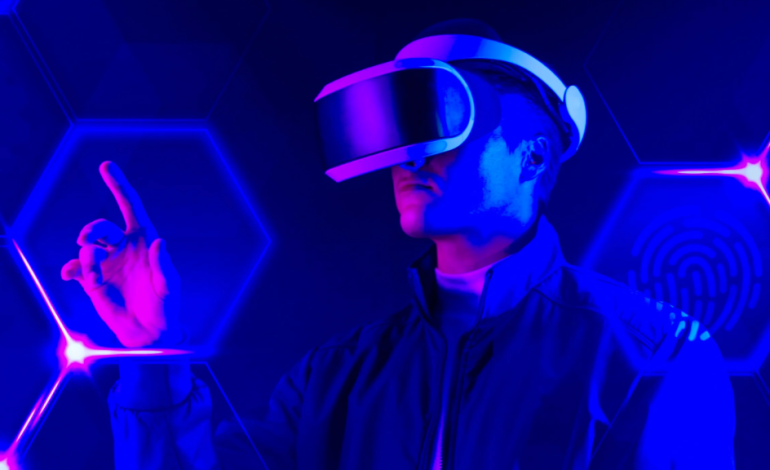
While some people are still ignorant of the augmented reality technology, some others have started hearing about it, but are still confused about how it works and all. After gaining some good deal of understanding, about this technology, as with any other, the big question in the mind of anyone is; how can I make use of this technology? What can I do with it? So, you might be wondering what type of augmented reality can fit your need.

Gaming and entertainment took the lead in popularising augmented reality. It is understandable, especially when it comes to the consumer aspect. People are generally more drawn to fun and entertaining activities. But over to the enterprise side of things, gaming and entertainment are not the only areas where augmented reality is being applied.
AR has made its way into driving, health, e-commerce, advertising, manufacturing, education, etc. And while it is still being developed, we will see it being used in more fields and for more activities. This is mainly because it is enhancing how we interact and relate with our environment and real-world objects.
The potentials of this technology are enormous, but whether we choose to discuss what can become of it or focus on what it has already become, implementation is key. In other words, how it is being used is a major factor in how much it can and will do.
What type of augmented reality should you use?
The answer to this question depends on various things, especially on what exactly you are trying to achieve with AR. Well, since basically, augmented reality overlays the physical world with digital information, then certain questions are important in determining what type to use:
- What digital information do you want to display on the camera view?
- Where do you want it displayed?
Augmented reality takes different forms, and your answers to these questions would determining how this technology should be implemented, which shows what type of AR you will need.
Sometimes the digital content to be displayed would depend on the presence of certain elements in the user’s environment, and at other times it wouldn’t need anything in particular, but just output the virtual information. It is also possible to trigger the interaction based on a person’s location. Each of these situations requires different types of augmented reality to achieve the desired result.
Marker-based augmented reality
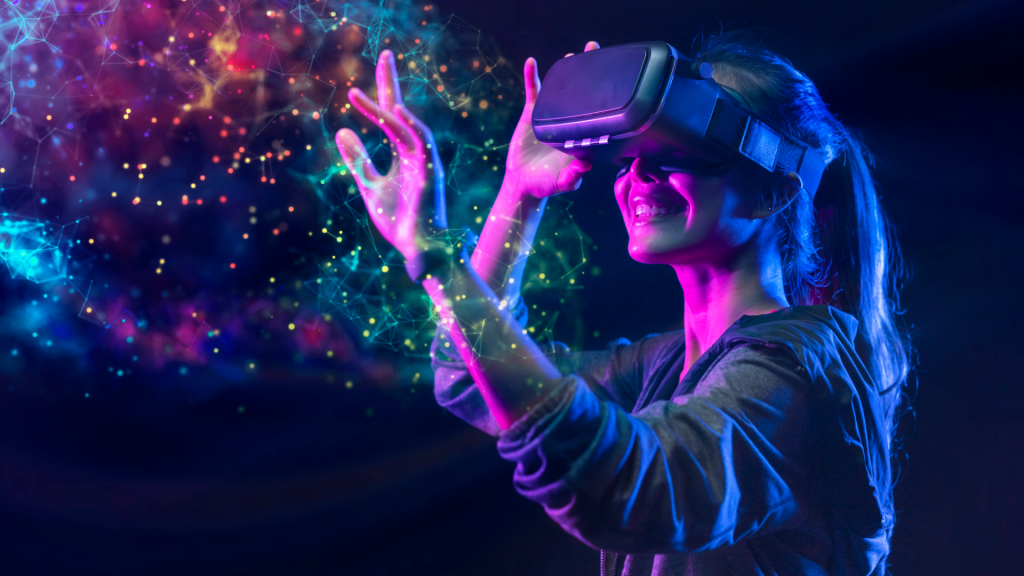

This is probably the most common type of augmented reality, as many applications are built around it. It works basically through image recognition. When a user captures a visual of their environment using a device camera, there will be a particular visual element which serves as a “marker” that will trigger a response from the augmented reality application once it recognizes it.
Such a response might be to display certain digital information like images, play a video or animation, or prompt some actions from the user.
To use this type of AR you need a unique shape or picture that will be placed on a surface (for instance a page in a book). This picture should have unique visual elements that make it easily recognizable. It could be a diagram on a printed page, a logo, brochure, barcode, etc
Also, you need to build into an application the interactions you want the user to experience. These interactions will be triggered by the marker once a user’s camera captures it using the app.
This type of AR works well for marketing purposes, like displaying additional product information, triggered by a visual element from the product’s packaging or marketing material. This is also the type of AR that works with AR business cards to display more information about the card owner than what can ordinarily be contained in the small card.
You can also use it for providing real-time expert support remotely. Watch this video:
Markerless AR
For the marker-based AR, a visual element determines where the virtual object will be displayed. However, for markerless AR, the user determines where the virtual object will be placed. This means that a user can move the virtual object to different places or points on the display screen.
You will need this when all you want to do is place a 3D object in front of the user, without regard to the user’s environment or the presence of a particular feature. An example of this is the IKEA Place app, which allows users to try out pieces of furniture in their homes and see how they fit into different spaces. Users can actually move the furniture about or try different variations.
Location-based AR
Location-based AR brings the virtual world into the real world by placing virtual objects in real-world places, like streets. This is the type of AR that powers games like Pokemon Go.
If you played the game, you know you had to go around your neighborhood or step out on the street to locate, capture and battle virtual objects, known as Pokemon. These virtual objects showed up like they were present in your real world, and as you moved physically, your avatar moved inside the game’s map and brought you closer to them.
As the name implies, the virtual objects are tied to specific locations. While it is being used to make gaming experiences look more real, this type of AR can also be used for marketing campaigns, by implementing an AR experience around a particular location, and users can view it via their mobile device when they are around that area.
Here are some cases where it is being used:


- Help customers find sales outlets
- Game experience
- On-site navigation (to provide map directions displayed on the roads as users view through their phones
To determine what type of augmented reality would fit your need, it is important to, first of all, establish that need. Knowing what you want to achieve will tell what type will be implemented to create the solution you desire.
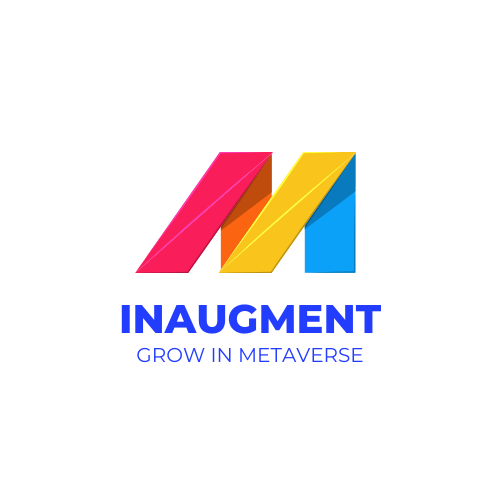
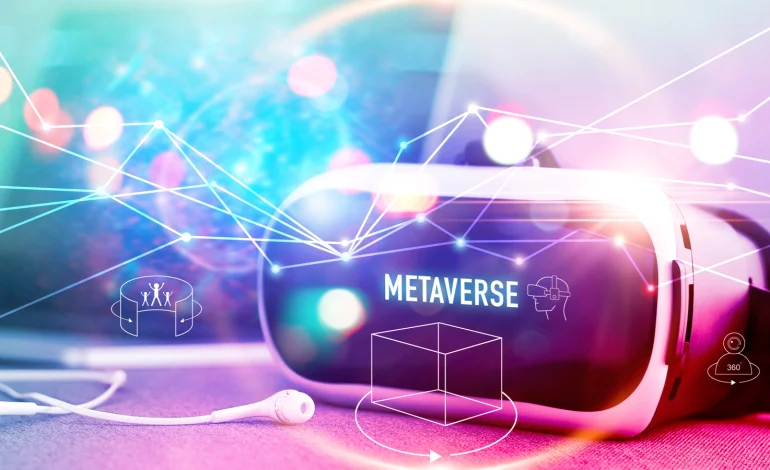

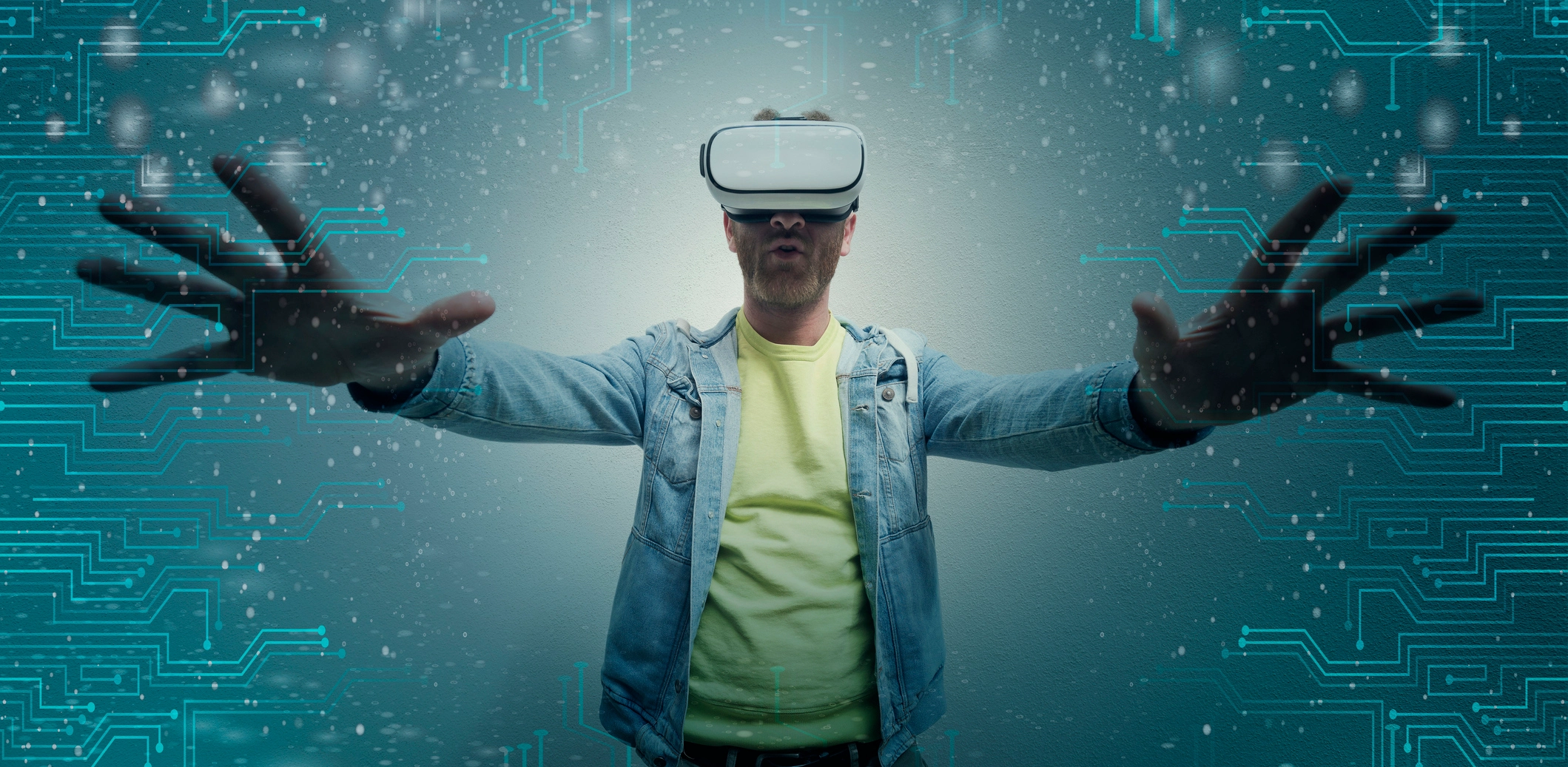
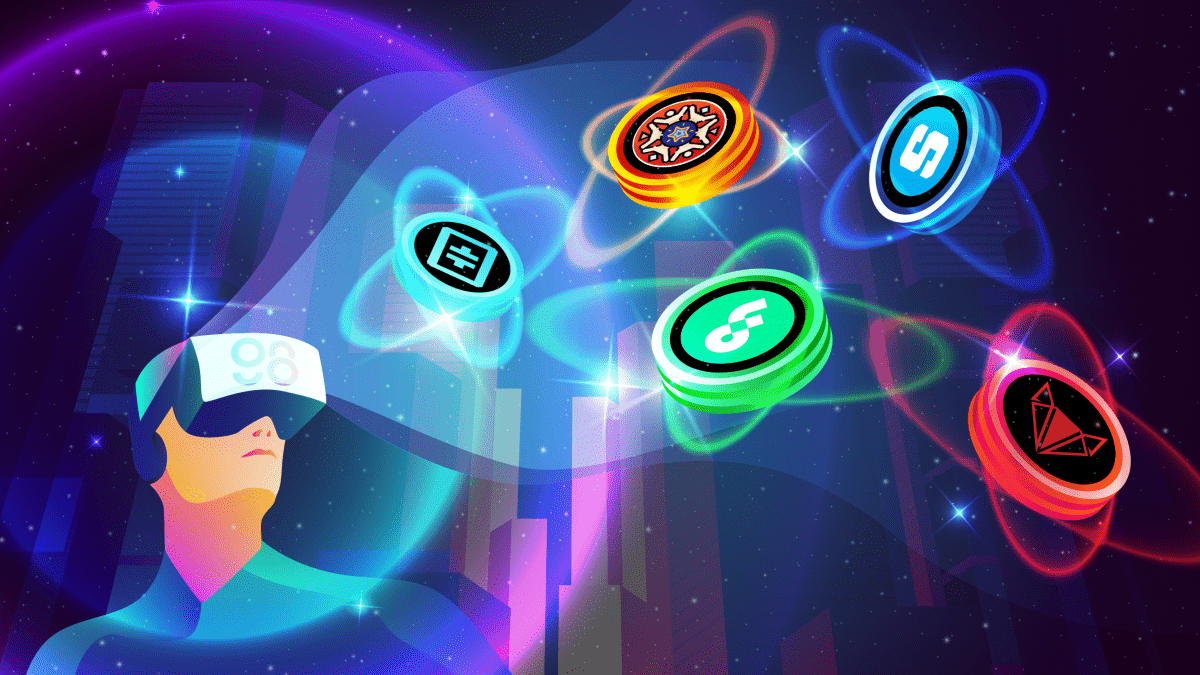

346 Comments
Course registration at future university in egypt
[…]Every after in a even though we opt for blogs that we study. Listed below would be the newest web-sites that we choose […]
ما هي ارخص جامعة خاصة في مصر
[…]Sites of interest we have a link to[…]
تحسين التصنيف العالمي
[…]Sites of interest we have a link to[…]
Top Management fue
[…]The information talked about inside the post are a few of the top offered […]
Contact Information Faculty of business administration
[…]below you will find the link to some websites that we consider you need to visit[…]
نظم المعلومات الإدارية
[…]please take a look at the sites we follow, such as this one particular, as it represents our picks in the web[…]
Contemporary business education
[…]that is the finish of this post. Here you値l locate some internet sites that we feel you値l value, just click the links over[…]
دورات ماجستير إدارة الأعمال في مصر
[…]that could be the end of this post. Here you値l find some websites that we feel you値l enjoy, just click the links over[…]
Job prospects in MIS
[…]very couple of internet websites that occur to become detailed beneath, from our point of view are undoubtedly effectively worth checking out[…]
Executive MBA program in Cairo
[…]we came across a cool web page that you just may take pleasure in. Take a appear for those who want[…]
كلية إدارة الأعمال في مصر
[…]here are some hyperlinks to websites that we link to for the reason that we believe they’re worth visiting[…]
ماجستير في إدارة الأعمال
[…]Here is an excellent Weblog You may Locate Intriguing that we Encourage You[…]
MBA degree Cairo
[…]just beneath, are quite a few entirely not related sites to ours, nevertheless, they may be certainly really worth going over[…]
ماجستير في إدارة الأعمال
[…]please take a look at the web pages we follow, like this one, as it represents our picks in the web[…]
Admission requirements for future university
[…]here are some hyperlinks to sites that we link to since we feel they may be worth visiting[…]
رسوم التقديم لجامعة المستقبل
[…]check beneath, are some absolutely unrelated internet websites to ours, however, they’re most trustworthy sources that we use[…]
Econometrics
[…]below you値l come across the link to some web-sites that we believe you ought to visit[…]
Higher education in public administration
[…]although sites we backlink to below are considerably not associated to ours, we feel they are really really worth a go by, so have a look[…]
future University application process
[…]here are some hyperlinks to web pages that we link to simply because we think they are really worth visiting[…]
fue
[…]we came across a cool internet site which you might take pleasure in. Take a search if you want[…]
ما هي أهداف العلوم السياسية
[…]one of our visitors not too long ago proposed the following website[…]
مميزات كلية الصيدلة بجامعة المستقبل
[…]one of our guests a short while ago advised the following website[…]
Corporate Activities with Internal and External Entities for pharmacy students at future university
[…]Wonderful story, reckoned we could combine a number of unrelated information, nevertheless genuinely worth taking a look, whoa did one understand about Mid East has got extra problerms as well […]
برامج الإقامة في طب الأسنان
[…]that would be the finish of this report. Right here you will discover some sites that we believe you will enjoy, just click the hyperlinks over[…]
Hot Plates
[…]Here are some of the sites we suggest for our visitors[…]
Diagnosis and Oral Radiology Department
[…]the time to read or check out the content or internet sites we have linked to below the[…]
تقويم الاسنان
[…]check below, are some totally unrelated web sites to ours, even so, they may be most trustworthy sources that we use[…]
Implantology master’s degree
[…]that could be the finish of this post. Here you値l locate some web-sites that we consider you will appreciate, just click the hyperlinks over[…]
Dental Workshops
[…]please stop by the websites we adhere to, including this one, as it represents our picks through the web[…]
Future University Egypt MBA
[…]below you will discover the link to some web sites that we feel you must visit[…]
افضل جامعة لدراسة ادارة الاعمال
[…]just beneath, are various totally not connected web pages to ours, nonetheless, they may be certainly worth going over[…]
research and innovation
[…]Here are a few of the web pages we advise for our visitors[…]
????? ???????
[…]below you will obtain the link to some web-sites that we believe you need to visit[…]
???? ???? ????? ?? ???
[…]Wonderful story, reckoned we could combine some unrelated information, nevertheless seriously really worth taking a search, whoa did a single find out about Mid East has got a lot more problerms too […]
Graduation project
[…]we came across a cool internet site which you could possibly appreciate. Take a look if you want[…]
قسم تكنولوجيا الوسائط الرقمية
[…]usually posts some very fascinating stuff like this. If you池e new to this site[…]
Faculty Handbook
[…]one of our visitors lately encouraged the following website[…]
Graduate Studies
[…]we like to honor lots of other net web-sites around the internet, even when they aren稚 linked to us, by linking to them. Under are some webpages worth checking out[…]
Biomedical Engineering Program
[…]Sites of interest we have a link to[…]
excellence
[…]please go to the web sites we stick to, such as this one, as it represents our picks through the web[…]
leading universities
[…]Sites of interest we’ve a link to[…]
مناهج ماجستير إدارة الأعمال في مصر
[…]Every when inside a although we select blogs that we study. Listed below are the newest web-sites that we opt for […]
https://www.kooky.domains/post/why-do-i-need-a-wallet-to-use-web3-domains
[…]that would be the finish of this write-up. Right here you will come across some web pages that we assume you will enjoy, just click the links over[…]
https://www.kooky.domains/post/the-basics-of-web3-domains-what-you-need-to-know
[…]that may be the finish of this article. Right here you値l locate some websites that we believe you値l value, just click the hyperlinks over[…]
الخدمة المجتمعية
[…]here are some hyperlinks to web pages that we link to for the reason that we think they are worth visiting[…]
Faculty Regulations
[…]that could be the finish of this article. Here you値l come across some web-sites that we think you値l appreciate, just click the links over[…]
Economics
[…]Here are a few of the web pages we advise for our visitors[…]
Model United Nations
[…]although internet sites we backlink to below are considerably not connected to ours, we really feel they are basically really worth a go by, so possess a look[…]
Computer Engineering Education
[…]check below, are some absolutely unrelated sites to ours, having said that, they are most trustworthy sources that we use[…]
Get in Touch with Faculty of EComputers and Information Technology
[…]although internet websites we backlink to beneath are considerably not related to ours, we feel they may be in fact really worth a go by, so have a look[…]
Schlumberger Egypt
[…]Here is a superb Weblog You may Come across Interesting that we Encourage You[…]
التعليم المستمر لطب الأسنان
[…]we came across a cool website that you just may possibly enjoy. Take a appear when you want[…]
ما هو افضل تخصص في ادارة الاعمال
[…]that will be the finish of this article. Right here you will come across some sites that we consider you will value, just click the hyperlinks over[…]
Advanced Dental Training
[…]below you値l locate the link to some websites that we believe you should visit[…]
التعليم المستمر لطب الأسنان
[…]Here are several of the internet sites we advise for our visitors[…]
قبول الطلاب الدوليين في جامعة المستقبل
[…]Sites of interest we’ve a link to[…]
Maillot de football
[…]we came across a cool internet site that you simply could get pleasure from. Take a appear in the event you want[…]
Maillot de football
[…]that would be the finish of this post. Here you will uncover some internet sites that we think you will appreciate, just click the links over[…]
Maillot de football
[…]Wonderful story, reckoned we could combine a number of unrelated information, nonetheless really worth taking a search, whoa did one particular learn about Mid East has got extra problerms as well […]
Maillot de football
[…]we came across a cool web-site which you may delight in. Take a look for those who want[…]
Maillot de football
[…]one of our guests lately suggested the following website[…]
Maillot de football
[…]Here is a good Blog You may Find Interesting that we Encourage You[…]
Maillot de football
[…]just beneath, are various completely not associated websites to ours, however, they may be surely worth going over[…]
Maillot de football
[…]we like to honor quite a few other web web pages on the internet, even when they aren稚 linked to us, by linking to them. Below are some webpages really worth checking out[…]
Maillot de football
[…]Here are several of the web sites we suggest for our visitors[…]
Maillot de football
[…]that will be the finish of this report. Here you will come across some sites that we consider you値l value, just click the links over[…]
Maillot de football
[…]always a large fan of linking to bloggers that I enjoy but do not get a whole lot of link appreciate from[…]
Maillot de football
[…]The data talked about within the report are a few of the ideal readily available […]
Maillot de football
[…]Wonderful story, reckoned we could combine several unrelated data, nevertheless truly worth taking a look, whoa did 1 discover about Mid East has got additional problerms too […]
SEOSolutionVIP Fiverr
[…]Wonderful story, reckoned we could combine a number of unrelated data, nevertheless truly worth taking a search, whoa did 1 study about Mid East has got a lot more problerms at the same time […]
SEOSolutionVIP Fiverr
[…]Here are a few of the web pages we advise for our visitors[…]
SEOSolutionVIP Fiverr
[…]one of our visitors a short while ago suggested the following website[…]
Luce lineare LED
[…]Here is a good Weblog You might Discover Fascinating that we Encourage You[…]
strip led camera da letto
[…]very handful of web sites that happen to become in depth below, from our point of view are undoubtedly well worth checking out[…]
cage mma
[…]that is the finish of this article. Right here you will obtain some websites that we consider you will enjoy, just click the hyperlinks over[…]
presse pectoraux
[…]here are some hyperlinks to web pages that we link to simply because we feel they are worth visiting[…]
liv pure
[…]we came across a cool web-site that you simply could delight in. Take a search in the event you want[…]
neuropure
[…]very few internet sites that come about to become in depth below, from our point of view are undoubtedly nicely really worth checking out[…]
Fiverr Earn
[…]we prefer to honor a lot of other web internet sites on the web, even when they aren稚 linked to us, by linking to them. Underneath are some webpages worth checking out[…]
Fiverr Earn
[…]check below, are some absolutely unrelated internet websites to ours, on the other hand, they are most trustworthy sources that we use[…]
Fiverr Earn
[…]Here is a good Weblog You may Discover Fascinating that we Encourage You[…]
Fiverr Earn
[…]Every as soon as inside a though we select blogs that we read. Listed beneath would be the newest websites that we decide on […]
Fiverr Earn
[…]below you値l obtain the link to some web-sites that we consider you must visit[…]
Fiverr Earn
[…]Here is a good Weblog You may Uncover Fascinating that we Encourage You[…]
Fiverr Earn
[…]very couple of internet sites that transpire to be in depth beneath, from our point of view are undoubtedly properly worth checking out[…]
Fiverr Earn
[…]usually posts some really interesting stuff like this. If you池e new to this site[…]
Fiverr Earn
[…]always a significant fan of linking to bloggers that I love but really don’t get a good deal of link adore from[…]
Fiverr Earn
[…]here are some links to web pages that we link to for the reason that we assume they’re really worth visiting[…]
Fiverr Earn
[…]always a massive fan of linking to bloggers that I enjoy but don稚 get a whole lot of link appreciate from[…]
Fiverr Earn
[…]usually posts some incredibly exciting stuff like this. If you are new to this site[…]
Fiverr Earn
[…]always a large fan of linking to bloggers that I really like but do not get quite a bit of link like from[…]
Hooled controsoffitto led
[…]just beneath, are many totally not associated web sites to ours, nonetheless, they may be certainly really worth going over[…]
fiverrearn.com
[…]usually posts some really fascinating stuff like this. If you池e new to this site[…]
fiverrearn.com
[…]please pay a visit to the sites we stick to, including this one particular, because it represents our picks through the web[…]
fiverrearn.com
[…]we like to honor lots of other web websites on the net, even though they aren稚 linked to us, by linking to them. Beneath are some webpages really worth checking out[…]
fiverrearn.com
[…]here are some hyperlinks to websites that we link to simply because we assume they’re worth visiting[…]
fiverrearn.com
[…]one of our guests a short while ago recommended the following website[…]
fiverrearn.com
[…]just beneath, are numerous entirely not connected websites to ours, nevertheless, they are surely worth going over[…]
fiverrearn.com
[…]Every as soon as inside a whilst we pick out blogs that we read. Listed beneath are the latest websites that we pick […]
Advance-Esthetic LLC
[…]very handful of web sites that take place to be comprehensive beneath, from our point of view are undoubtedly nicely worth checking out[…]
fiverrearn.com
[…]Here is an excellent Blog You might Come across Interesting that we Encourage You[…]
fiverrearn.com
[…]Sites of interest we’ve a link to[…]
liv pure buy
[…]here are some hyperlinks to web sites that we link to because we consider they may be worth visiting[…]
ikaria juice mediprime
[…]the time to read or stop by the material or web-sites we have linked to below the[…]
prodentim mediprime
[…]one of our guests just lately advised the following website[…]
french bulldog for sale houston
[…]Wonderful story, reckoned we could combine a number of unrelated information, nevertheless genuinely really worth taking a look, whoa did one discover about Mid East has got more problerms also […]
clothes manufacturing
[…]The facts mentioned within the post are some of the very best accessible […]
mexico clothes manufacturing
[…]we came across a cool site that you just may possibly appreciate. Take a search in case you want[…]
clima para hoy
[…]the time to study or check out the subject material or internet sites we’ve linked to below the[…]
fiverrearn.com
[…]usually posts some extremely exciting stuff like this. If you are new to this site[…]
fiverrearn.com
[…]please pay a visit to the web-sites we comply with, which includes this one particular, as it represents our picks in the web[…]
fiverrearn.com
[…]The information and facts mentioned inside the article are a few of the best out there […]
french bulldog
[…]Sites of interest we have a link to[…]
fiverrearn.com
[…]Sites of interest we have a link to[…]
fiverrearn.com
[…]that may be the finish of this write-up. Here you will locate some web sites that we think you値l appreciate, just click the links over[…]
fiverrearn.com
[…]always a big fan of linking to bloggers that I love but really don’t get a great deal of link appreciate from[…]
french bulldog puppies for sale san francisco
[…]The information and facts mentioned inside the post are a few of the ideal out there […]
french bulldogs in california for sale
[…]Every after in a even though we select blogs that we study. Listed beneath would be the newest sites that we select […]
frenchie red eyes
[…]very couple of web sites that transpire to be detailed below, from our point of view are undoubtedly nicely worth checking out[…]
french bulldog puppies texas
[…]we came across a cool website that you could get pleasure from. Take a look in the event you want[…]
is coconut oil good for french bulldogs
[…]please stop by the web sites we stick to, including this a single, because it represents our picks through the web[…]
american bully exotic
[…]check below, are some completely unrelated sites to ours, however, they’re most trustworthy sources that we use[…]
mini bulldog
[…]The facts talked about in the report are a few of the ideal out there […]
american bully lifespan
[…]that will be the finish of this report. Here you値l uncover some web pages that we think you will appreciate, just click the links over[…]
designer dogs
[…]Sites of interest we have a link to[…]
renting golf cart isla mujeres
[…]Every after inside a when we decide on blogs that we study. Listed beneath would be the most current websites that we choose […]
Seo marketing
[…]The data mentioned in the article are some of the ideal obtainable […]
Short-term Piano Storage
[…]always a large fan of linking to bloggers that I enjoy but don稚 get lots of link like from[…]
Safe Piano Removal
[…]check beneath, are some totally unrelated websites to ours, having said that, they are most trustworthy sources that we use[…]
Secure Piano Storage
[…]check below, are some completely unrelated sites to ours, even so, they may be most trustworthy sources that we use[…]
Best university in Egypt
[…]although sites we backlink to beneath are considerably not associated to ours, we feel they’re in fact really worth a go by, so have a look[…]
Private universities in Egypt
[…]check below, are some totally unrelated web-sites to ours, nonetheless, they’re most trustworthy sources that we use[…]
Top university in Egypt
[…]here are some hyperlinks to sites that we link to mainly because we feel they may be really worth visiting[…]
Best university in Egypt
[…]we prefer to honor lots of other web web-sites on the net, even though they aren稚 linked to us, by linking to them. Beneath are some webpages really worth checking out[…]
Top university in Egypt
[…]check beneath, are some absolutely unrelated sites to ours, on the other hand, they may be most trustworthy sources that we use[…]
Best university in Egypt
[…]the time to read or visit the content or sites we have linked to beneath the[…]
Best university in Egypt
[…]below you will find the link to some web-sites that we consider it is best to visit[…]
isla mujeres golf carts
[…]one of our guests lately suggested the following website[…]
golf cart rental isla mujeres
[…]we came across a cool web page that you may well delight in. Take a search should you want[…]
isabella french bulldog
[…]The info mentioned inside the article are a few of the best offered […]
mini french bulldog for sale
[…]one of our visitors lately proposed the following website[…]
rescue french bulldog
[…]Sites of interest we have a link to[…]
rescue french bulldog
[…]The info talked about inside the post are a number of the very best offered […]
rescue french bulldog
[…]the time to study or pay a visit to the content or web sites we’ve linked to beneath the[…]
blue brindle french bulldog
[…]we came across a cool web-site that you could possibly enjoy. Take a look when you want[…]
pied french bulldog
[…]Here are several of the internet sites we recommend for our visitors[…]
micro blue french bulldog
[…]the time to read or check out the content material or web sites we have linked to beneath the[…]
french bulldog colors
[…]please stop by the sites we adhere to, including this one, as it represents our picks through the web[…]
french bulldog size
[…]The facts mentioned within the post are a number of the ideal available […]
blockchain
[…]check below, are some entirely unrelated internet sites to ours, having said that, they may be most trustworthy sources that we use[…]
jewelry
[…]that is the end of this article. Right here you値l obtain some web sites that we feel you will value, just click the hyperlinks over[…]
mini french bulldog
[…]Every after inside a when we pick out blogs that we study. Listed below are the newest sites that we decide on […]
bewerto
[…]very few sites that transpire to become in depth below, from our point of view are undoubtedly well worth checking out[…]
clima en los angeles california
[…]we prefer to honor several other web internet sites around the net, even though they aren稚 linked to us, by linking to them. Underneath are some webpages really worth checking out[…]
miniature french bulldog for sale
[…]Wonderful story, reckoned we could combine a couple of unrelated information, nonetheless seriously really worth taking a look, whoa did one understand about Mid East has got more problerms at the same time […]
french bulldog texas for sale
[…]The information and facts mentioned in the article are a number of the most effective available […]
18k gold plated
[…]Here is a good Blog You might Discover Exciting that we Encourage You[…]
technology
[…]The data mentioned within the post are a number of the best accessible […]
future university
[…]Here is a good Blog You may Come across Fascinating that we Encourage You[…]
future university
[…]usually posts some quite interesting stuff like this. If you池e new to this site[…]
future university
[…]Here are a number of the web sites we advocate for our visitors[…]
french bulldog houston texas
[…]check below, are some entirely unrelated websites to ours, nonetheless, they’re most trustworthy sources that we use[…]
sole mare
[…]check below, are some totally unrelated internet websites to ours, nonetheless, they may be most trustworthy sources that we use[…]
sigma sigma sigma shirt
[…]here are some hyperlinks to internet sites that we link to due to the fact we feel they are worth visiting[…]
multisbo rtp
[…]we prefer to honor a lot of other world wide web websites on the web, even when they aren稚 linked to us, by linking to them. Below are some webpages really worth checking out[…]
rent a golf cart isla mujeres
[…]Sites of interest we’ve a link to[…]
puppy french bulldogs for sale
[…]always a huge fan of linking to bloggers that I adore but really don’t get a whole lot of link love from[…]
best university Egypt
[…]Sites of interest we have a link to[…]
Lean
[…]The data talked about inside the write-up are several of the best accessible […]
Secure piano storage
[…]Wonderful story, reckoned we could combine several unrelated data, nonetheless genuinely really worth taking a look, whoa did a single master about Mid East has got much more problerms too […]
Efficient moving
[…]here are some hyperlinks to internet sites that we link to simply because we consider they may be really worth visiting[…]
Reliable movers
[…]we prefer to honor numerous other internet internet sites on the net, even though they aren稚 linked to us, by linking to them. Beneath are some webpages worth checking out[…]
batmanapollo.ru
batmanapollo.ru
pcfinancial ca activate
[…]usually posts some incredibly fascinating stuff like this. If you are new to this site[…]
where is bali
[…]that will be the finish of this report. Right here you will obtain some internet sites that we assume you will enjoy, just click the links over[…]
Business leadership training in Egypt
[…]The info talked about within the post are several of the top obtainable […]
777
778
wlw.su
wlw.su
vxi.su
vxi.su
Classic Books 500
[…]check beneath, are some entirely unrelated web-sites to ours, nevertheless, they are most trustworthy sources that we use[…]
nlpvip.ru
nlpvip.ru
russianmanagement.com
russianmanagement.com
Slovo pacana 6 seriya
Slovo pacana 6 seriya
Free Local Classified Ads
[…]one of our guests recently suggested the following website[…]
site
site
slovo-pacana-6-seriya
slovo-pacana-6-seriya
manipulyation
manipulyation
Training Philippines
[…]here are some hyperlinks to sites that we link to for the reason that we believe they may be worth visiting[…]
Media
[…]one of our guests not long ago recommended the following website[…]
Becoming Porn star
[…]Wonderful story, reckoned we could combine some unrelated information, nonetheless seriously really worth taking a search, whoa did one find out about Mid East has got far more problerms too […]
pupuk cair terbaik
[…]please go to the websites we stick to, such as this one, as it represents our picks in the web[…]
pupuk organik
[…]below you値l come across the link to some web sites that we assume you’ll want to visit[…]
pupuk anorganik dan pupuk organik
[…]we prefer to honor quite a few other web web-sites on the internet, even if they aren稚 linked to us, by linking to them. Underneath are some webpages really worth checking out[…]
sildenafil vs vardenafil vs tadalafil
What Type Of Augmented Reality Can Fit Your Need?
Pupuk Anorganik terpercaya dan terbaik melalui pupukanorganik.com
[…]The details mentioned within the article are a few of the very best obtainable […]
essay paper writing service
What Type Of Augmented Reality Can Fit Your Need?
essay writing service law
What Type Of Augmented Reality Can Fit Your Need?
best writing service reviews
What Type Of Augmented Reality Can Fit Your Need?
partners
[…]Here is a superb Weblog You may Find Fascinating that we Encourage You[…]
buy custom essays
What Type Of Augmented Reality Can Fit Your Need?
top rated essay writing service
What Type Of Augmented Reality Can Fit Your Need?
online essay writer
What Type Of Augmented Reality Can Fit Your Need?
help with writing essays at university
What Type Of Augmented Reality Can Fit Your Need?
best high blood pressure treatment
[…]check below, are some absolutely unrelated web sites to ours, nonetheless, they’re most trustworthy sources that we use[…]
xitox website
[…]The data talked about in the write-up are some of the most effective obtainable […]
custom essay online
What Type Of Augmented Reality Can Fit Your Need?
claritox pro reviews
[…]always a major fan of linking to bloggers that I adore but really don’t get lots of link appreciate from[…]
online essay writing service
What Type Of Augmented Reality Can Fit Your Need?
fast lean pro official site
[…]Here are a number of the web-sites we advise for our visitors[…]
red boost amazon
[…]always a significant fan of linking to bloggers that I enjoy but do not get a whole lot of link enjoy from[…]
custom essay writing service reviews
What Type Of Augmented Reality Can Fit Your Need?
buy essay online cheap
What Type Of Augmented Reality Can Fit Your Need?
mba essay writing services
What Type Of Augmented Reality Can Fit Your Need?
mba admission essay writing service
What Type Of Augmented Reality Can Fit Your Need?
help writing my college essay
What Type Of Augmented Reality Can Fit Your Need?
essay homework help
What Type Of Augmented Reality Can Fit Your Need?
FiverrEarn
[…]we like to honor lots of other web web-sites around the web, even when they aren稚 linked to us, by linking to them. Underneath are some webpages worth checking out[…]
live sex cams
[…]check below, are some entirely unrelated websites to ours, even so, they are most trustworthy sources that we use[…]
live sex cams
[…]that will be the finish of this article. Right here you will come across some web-sites that we assume you値l appreciate, just click the links over[…]
live sex cams
[…]we prefer to honor quite a few other net internet sites on the internet, even though they aren稚 linked to us, by linking to them. Under are some webpages really worth checking out[…]
norcos online pharmacy
What Type Of Augmented Reality Can Fit Your Need?
best drug store primer
What Type Of Augmented Reality Can Fit Your Need?
us pharmacy online viagra
What Type Of Augmented Reality Can Fit Your Need?
propranolol uk pharmacy
What Type Of Augmented Reality Can Fit Your Need?
best online pharmacy to buy hydrocodone
best online pharmacy to buy hydrocodone
buying tadalafil
buying tadalafil
best viagra coupon
best viagra coupon
Update Site Error ¹ 654
Update Site Error ¹ 654
Update Site Error ¹ 655
Update Site Error ¹ 655
tadalafil vs cialis
tadalafil vs cialis
what is cialis used to treat
what is cialis used to treat
buying viagra nz
buying viagra nz
where can i buy cialis in the uk
where can i buy cialis in the uk
viagra discount canada
viagra discount canada
buy viagra super active
buy viagra super active
cialis 20 mg price walgreens
cialis 20 mg price walgreens
viagra 100mg cost in india
viagra 100mg cost in india
sildenafil over the counter australia
sildenafil over the counter australia
354
354
Queen Arwa University
[…]The information talked about inside the write-up are a few of the most effective offered […]
Link
Link
technology
[…]that may be the finish of this write-up. Right here you will obtain some web pages that we assume you will appreciate, just click the hyperlinks over[…]
diamond
[…]the time to read or stop by the content or web-sites we’ve linked to below the[…]
Scientific Research
[…]below you値l obtain the link to some sites that we feel it is best to visit[…]
Kuliah Termurah
[…]the time to study or pay a visit to the subject material or internet sites we’ve linked to below the[…]
psy
psy
FiverrEarn
[…]check below, are some absolutely unrelated websites to ours, having said that, they may be most trustworthy sources that we use[…]
FiverrEarn
[…]below you値l find the link to some websites that we think you should visit[…]
FiverrEarn
[…]Here are a number of the websites we advise for our visitors[…]
FiverrEarn
[…]Every when in a even though we pick blogs that we read. Listed below would be the most up-to-date web pages that we decide on […]
FiverrEarn
[…]one of our visitors not long ago recommended the following website[…]
FiverrEarn
[…]the time to read or go to the content material or web-sites we’ve linked to beneath the[…]
FiverrEarn
[…]very handful of sites that happen to be comprehensive beneath, from our point of view are undoubtedly properly worth checking out[…]
FiverrEarn
[…]below you will uncover the link to some web-sites that we believe you must visit[…]
FiverrEarn
[…]Here are a few of the sites we suggest for our visitors[…]
kiino4k.ru
kiino4k.ru
vardenafil tadalafil
vardenafil tadalafil
buy tadalafil without prescription
buy tadalafil without prescription
buy tramadol us pharmacy online
buy tramadol us pharmacy online
sure save pharmacy
sure save pharmacy
cialis sales canadian
cialis sales canadian
viagra india pharmacy
viagra india pharmacy
can you buy viagra over the counter in canada
can you buy viagra over the counter in canada
best reviewed tadalafil site
best reviewed tadalafil site
achats produit tadalafil pour femme en ligne
achats produit tadalafil pour femme en ligne
Tetracycline
Tetracycline
where to buy genuine viagra online
where to buy genuine viagra online
film
film
new 2024
new 2024
sildenafil india buy
sildenafil india buy
batman apollo
batman apollo
canada pharmacy viagra
canada pharmacy viagra
viagra cheap online
viagra cheap online
buy viagra online prescription
buy viagra online prescription
viagra tablets pharmacy
viagra tablets pharmacy
buy cialis online no prescription
buy cialis online no prescription
how much tadalafil should i take
how much tadalafil should i take
how long does cialis take to work 10mg
how long does cialis take to work 10mg
vigra and cialis
vigra and cialis
film2024
film2024
bactrim hallucinations
bactrim hallucinations
neurontin bugiardino
neurontin bugiardino
123 Movies
123 Movies
laloxeziya-chto-eto-prostymi-slovami.ru
laloxeziya-chto-eto-prostymi-slovami.ru
metronidazole anaphylaxis
metronidazole anaphylaxis
what is the generic for lyrica
what is the generic for lyrica
splitting valtrex
splitting valtrex
stopping tamoxifen
stopping tamoxifen
contraindicaciones lasix
contraindicaciones lasix
metformin geschmacksveränderung
metformin geschmacksveränderung
lisinopril 40/25
lisinopril 40/25
using rybelsus for weight loss
using rybelsus for weight loss
pcos and semaglutide
pcos and semaglutide
semaglutide trade name
semaglutide trade name
Generator Repair Sheffield
[…]please stop by the websites we follow, such as this one, because it represents our picks in the web[…]
cheap sex cams
[…]very few websites that transpire to become detailed beneath, from our point of view are undoubtedly very well really worth checking out[…]
zoloft and dextromethorphan
zoloft and dextromethorphan
flagyl 0.250
flagyl 0.250
Tucker Carlson – Vladimir Putin – 2024-02-09 Putin interview summary, full interview.
Tucker Carlson – Vladimir Putin – 2024-02-09 Putin interview summary, full interview.
Tucker Carlson – Vladimir Putin
Tucker Carlson – Vladimir Putin
escitalopram and buspirone combination
escitalopram and buspirone combination
gabapentin lamictal
gabapentin lamictal
cymbalta coupon 2016
cymbalta coupon 2016
what is the half life of lexapro
what is the half life of lexapro
night sweats duloxetine
night sweats duloxetine
fluoxetine the same as prozac
fluoxetine the same as prozac
keflex liquid dosing
keflex liquid dosing
cephalexin and sun
cephalexin and sun
canada rx viagra
canada rx viagra
can you take amoxicillin for covid
can you take amoxicillin for covid
spiraldynamics
spiraldynamics
Spiral Dynamics
Spiral Dynamics
cephalexin 500mg capsules para que sirve
cephalexin 500mg capsules para que sirve
side effects of ciprofloxacin for uti
side effects of ciprofloxacin for uti
frt trigger
[…]Wonderful story, reckoned we could combine a number of unrelated data, nonetheless actually really worth taking a look, whoa did one particular learn about Mid East has got much more problerms also […]
does bactrim treat mrsa
does bactrim treat mrsa
bactrim ds for sinus infection
bactrim ds for sinus infection
늑대닷컴
[…]Every as soon as in a when we pick out blogs that we study. Listed below would be the most up-to-date websites that we pick […]
Deposit
[…]Sites of interest we have a link to[…]
aplikasi slot deposit 5000
[…]very few internet sites that occur to be detailed beneath, from our point of view are undoubtedly properly worth checking out[…]
aplikasi slot
[…]usually posts some extremely exciting stuff like this. If you池e new to this site[…]
is amitriptyline a sleeping pill?
is amitriptyline a sleeping pill?
determination of simvastatin and ezetimibe
determination of simvastatin and ezetimibe
repaglinide category
repaglinide category
skelaxin vs robaxin
skelaxin vs robaxin
protonix ppi
protonix ppi
acarbose marcas
acarbose marcas
how long does it take for diltiazem to work
how long does it take for diltiazem to work
tirzepatide or semaglutide
tirzepatide or semaglutide
actos dentistas
actos dentistas
how long do effexor withdrawals last
how long do effexor withdrawals last
abilify alternatives
abilify alternatives
remeron drug classification
remeron drug classification
spironolactone zonder recept kopen
spironolactone zonder recept kopen
ivermectin 3mg tablets price
ivermectin 3mg tablets price
venlafaxine eye side effects
venlafaxine eye side effects
tamsulosin basics 0 4 mg hartkaps retard
tamsulosin basics 0 4 mg hartkaps retard
voltaren gel not absorbed into bloodstream
voltaren gel not absorbed into bloodstream
sitagliptin nephrotoxic
sitagliptin nephrotoxic
synthroid benefiber
synthroid benefiber
tizanidine for migraines
tizanidine for migraines
canadian tadalafil 20mg
canadian tadalafil 20mg
where to buy stromectol online
where to buy stromectol online
where to buy cheap viagra in usa
where to buy cheap viagra in usa
vardenafil 40 mg tablets
vardenafil 40 mg tablets
stromectol tablets uk
stromectol tablets uk
Comments are closed.